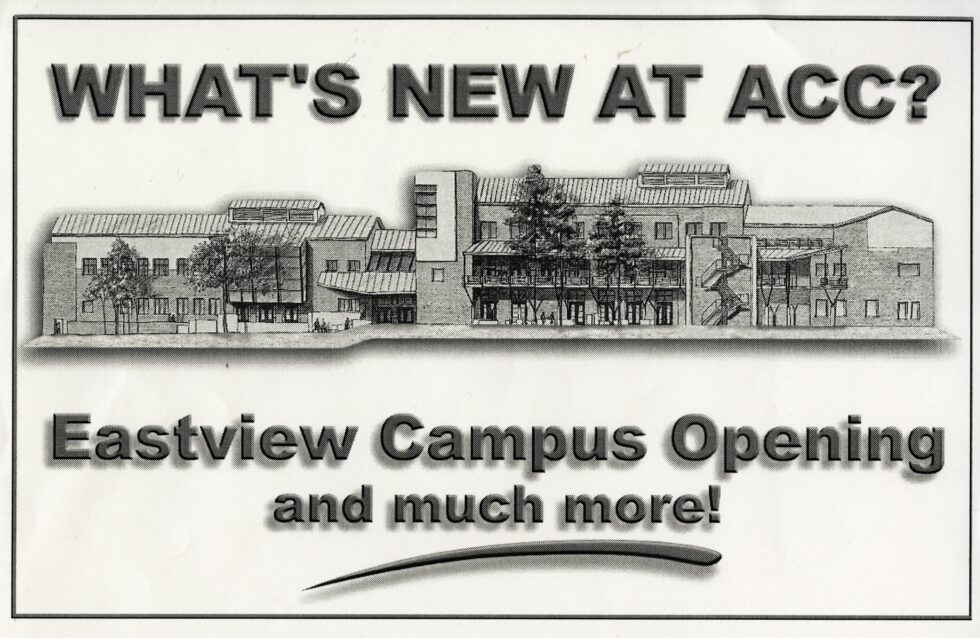ACC celebrates the opening of Eastview Campus, erected on the base of the hill where the college’s Ridgeview campus stood. Today’s campus features low-cost childcare, a dental clinic, the African-American Cultural Center, and the most health sciences programs of any ACC campus.
A Look Back…
Thirteen years after Austin Community College broke the hearts of East Austin residents by abandoning its Ridgeview campus, ACC celebrated the opening of the brand new Eastview Campus. An homage to Ridgeview, Eastview was erected on Webberville Road at the base of the same hill upon which Ridgeview had been perched. After a feeble attempt to make do in rented buildings on Ed Bluestein Blvd, ACC President Richard Fonte celebrated the new beginning by declaring that ACC was “reconnecting to its natural East Austin constituency while at the same time meeting the vocational and academic needs of the entire district. Previously, as Fonte conceded, ACC served a smaller percentage of minorities than those minorities represented in Austin’s total population. “It was pretty awful when they [ACC] left,” said Elizabeth Snipes, president of the Rosewood-Glen Oaks Neighborhood Association. “I hope they stay this time.”
The plan for Eastview was big and far-reaching, indeed, it could hardly have been more different from ACC’s humble beginnings. The school’s first budget in 1973 was $1.9 million; it enrolled only 1,700 students and owned none of its facilities. Eastview’s budget for the 1998-99 school year was over $80 million, enough to accommodate 2,500 students with state-of-the-art equipment and facilities.
The curriculum included core academic courses like English, Math, and history, but it was also designed to provide rewarding jobs and launch careers. Course listings included classes in computer science, accounting, fashion merchandising, fire-science, and criminal justice, the latter winning the endorsement of the Austin Police Department’s chief recruiter Jim Fealy as a boon to the department’s minority recruitment. A standout in the career-oriented programs were hotel-management and a gourmet-cooking school that featured a dining room that served entire meals and provided management experience for career-oriented students. These programs trained students not just for jobs but for careers that were intended to reverse the decline in locally-owned businesses in East Austin.
Eastview came along just as an economic renaissance was taking place in East Austin. Austin’s City Council reversed the policy of racial segregation laid down in the 1920s, and investors were developing a midtown entertainment corridor along East 11th and 12th Streets. The relocation of Robert Mueller Municipal Airport led to the repurposing of the old airport site into residential and commercial areas, even as the opening of Austin-Bergstrom International Airport farther south ignited an economic boom there. “We want to be a part of that economic economic development and provide the training opportunities that people will need,” said Tyra Duncan Hall, the Eastview Campus’ provost.
Source: Austin American-Statesman, January 11, 1999
